It is hard to quantify the impact of ‘role-model’ celebrities on the acceptance and uptake of genetic testing and bio-literacy, but it is surely significant. Angelina Jolie is an Oscar-winning actress, Brad Pitt’s other half, mother, humanitarian, and now a “DNA celebrity”. She propelled the topic of familial breast cancer, female prophylactic surgery, and DNA testing to the fore.
The post The Angelina Jolie effect appeared first on OUPblog.
I’ve just become Ireland’s first Patron of Reading. Trinity Comprehensive School, Ballymun, is a north Dublin school in an area which was, in the past, a byword for deprivation. In recent years, Ballymun has been the subject of a huge regeneration programme, and it’s a place where I have been welcomed since I did my very first school visit there four years ago.
 |
| This was drawn by the principal, Ms Fran Neary. |
 |
| where it all started |
In 2011, my first novel, Taking Flight, had just come out, and I’d only done a few local visits in Belfast schools. I was a fulltime teacher so I wasn’t nervous about talking to teenagers, but when the invitation from Trinity Comprehensive came in, it felt different. It was the first time I realised that readers outside Northern Ireland would connect with my characters. Joe Kelly, Trinity’s wonderful librarian, assured me that his pupils had liked Taking Flight‘because it seemed so real to them.’
That was the first of many visits to the school. I’ve done lots of talks and workshops in the library which is, like all good school libraries, central to the school, promoting literacy in its widest sense. I think I kept being invited back because I’m unpretentious and realistic. Earlier this year Joe and I decided to formalise the relationship by designating me Trinity’s Patron of Reading. I’m sure readers of this blog are familiar with the PoR scheme. It’s an excellent way for schools to connect with writers, and for writers to connect with readers. When I attended a ceremony in Trinity last month to mark becoming its Patron, one of the things I promised to do was to use my December ABBA post to celebrate being Ireland’s first PoR. |
| me on a school visit -- unglamorous but real |
In the last week, however, my thoughts have also been exercised by the furore over ghost-writing, transparency, and celebrity culture. There’s been a lot of nonsense in the media, as well as a lot of good common sense – not least here on ABBA: thank you, Keren David.
How does this link with the PoR scheme, and with school visits in general? I think the most important thing about authors visiting schools is that they make things real for the pupils. As a child, I had little concept of my favourite writers as actual people. The books just sort of appeared in the library, as if by magic, though I gleaned every little snippet of biographical information I could from the dust flap. When I wrote to Antonia Forest and she wrote back it felt like the most exciting thing that had ever happened anyone – to have a letter written by the same hand that had written the Marlow novels. (And I should point out that I was 23 and a PhD student at the time.)
 |
| the book that drove me mad |
What I always emphasise on school visits is that writing is a process, and often a fairly torturous one. I don’t pretend to write quickly and easily. I show the pupils the whole journey of a novel, from notebooks with rough planning, through printed-out and much scribbled over drafts, to the final book. I’m not precious – I tell them about the times when it’s been hard; I show them a six-page critique of an early draft of Taking Flight, and point out that there is a short paragraph of ‘Positives’ followed by five and half pages of ‘Issues to Consider’. I tell them about going to an editorial meeting to discuss Still Falling, and how my editors spent five minutes telling me what they liked about the novel and 55 minutes telling me what wasn’t working.
I’m not trying to put kids off. I always emphasise that making things up is magical, and seeing your ideas develop into actual stories that people read is the best thing in the world. But I do let them see that it involves a lot of hard work.
Nowadays I think that’s even more important. I once shared a platform with two children who had self-published. It was a ridiculous, uncomfortable event: there I was talking about hard work and rejection and editing and how hard it is to get published, and there were these two little pre-teen moppets with their shiny books. The primary school audience, who won’t have known the difference between self-publishing and commercial publishing, probably thought I was some kind of slow learner. But I least I told them the truth.
Honesty. I think we need more of it. I’m so proud to be Ireland’s first Patron of Reading, and I intend to keep on being honest about writing as a magical, but difficult craft.
 |
| Trinity Comprehensive School, Ballymun. |
I’m lucky enough to live close to Hay on Wye, it’s my destination of choice on a wet Sunday afternoon. The bookshops go on forever, and there are one or two decent places to eat, not something that can be said of many small Welsh towns. I’m a food snob, and a book snob, and a snob in general, so when the festival comes around, I like to make sure everyone I know who tells me they intend to go that I prefer Hay when it’s quieter, when I have the place to myself.
After all, most people who attend the festival are not there because of a hunger for all things literary. What they want more than anything else is to see, and if possible talk to, a celebrity. This doesn’t interest me at all. If I go, I'm there out of sheer intellectual curiosity.
Yesterday, however, after tramping through heavy rain from the car park in town to the main festival site, one end of Hay to the other, and thankfully having seen not one celebrity, I found a quiet bar, bought a hideously expensive pint and slumped myself in a sofa. I’d arranged to meet friends there, but they were scattered about the site, and none of them genuinely interested in books (unless you include ones by Alan Titchmarsh) so I had a few minutes to plan my intellectual journey for the day. I don’t know about you, but when I attend things like this I always have to have a focus – whether it’s poetry, or fiction, or history, I have to prepare myself, consider in advance what perspective I intend to take in order that I’m not thrown in any direction, and end up completely adrift on a brown sea of aimless hogwash. (Hay is muddy, remember).
And then Adrian Edmondson walked into the bar, in wellies, and he stood right next to me and I could actually hear him talking.
Those few minutes were very difficult for me, you understand. I was suddenly sucked under by just the sort of empty headed nonsense I had hoped to avoid. I remember, ten years ago, having a pee next to Adrian Edmondson in the toilets at Leigh Delamare services. He was more famous then. I didn’t speak to him on that particular occasion, of course. It would have been very inappropriate, but here, in a bar, well, this was a different matter.
I found I couldn't help myself from continually glancing up at him. Not because I am in awe of him in any way, but more likely because I was considering how his comedy is in an intellectual tradition that follows Beckett and Pinter, and I was thinking I could go up and ask him something along these lines but decided against it because he might think I was a tosser.
After Edmondson left the bar (he drank two pints when I had managed just one) I decided I would go and look for my friends so I could just mention, in passing, that I had just seen a very famous comedian, and making sure I shoehorned Beckett and Pinter into the same garbled sentence so I could impress upon them that I was interested in Edmondson from a cultural standpoint and really his fame was of no interest to me. He’s just a bloke like other blokes, he drinks beer and uses the urinal (I have witnessed both, remember).
So I hurried out of the bar, fighting against a tide of bodies making their way to some ‘talk’ or other. I pushed through the middle class masses wondering why it is that they feel this need to see someone talk. It’s as ridiculous as listening to someone paint. Why go all the way to Hay to see people talk? Similar talks are all over the internet. If you are truly interested in what these people have to say, then just stay at home and watch the videos on youtube. Or better still, read their books. It’s all very hollow, isn’t it?
And then I saw the great Australian novelist Tim Winton, and wasn’t that Martha Kearney just behind him? And what the hell is John Bercow doing here and, suddenly, looming out of the light like a great galleon emerging from fog, there is Stephen Fry, right there, in front of me, smiling, avuncular, our national treasure. He was being ushered towards the new signing area next to the bookshop, nodding, his massive brain working away.
Lower status celebs (like Bercow) sign books in the main shop, but those of bigger stature, like Fry, sit in a sort of corridor next to the shop, so fawning admirers can line up and wait their turn for a few seconds of unselfconscious, fully paid, staring.
I am above all this, of course, and when I eventually meet my friends, I quickly steer the conversation to the Theatre of the Absurd and just drop in the fact I had been in a bar with Adrian Edmondson, and wasn’t it pathetic that grown men and women stare and whisper, and that I’d also seen Stephen Fry.
One of my friends, Gary, then mentioned that he had a ticket to see Fry talking about Shakespeare. Gary has never seen a Shakespeare play in his life. So why, I wondered, was he so keen to hear what Fry had to say about the bard? I have all the BBC Shakespeare on DVD, as well as one or two of the Branaghs. I'm serious about my Shakespeare, not like Gary, who's just a dilettante. But off he went, ticket clasped in his hand, his eyes glazed over in expectation. Fool.
Later that day I made my way back to the car park in the town, still curious as to true nature of the festival. What is this desire human beings have to be close to famous people, who, just because they choose to write, or perform, are given inordinate status? I was thinking this, and as I entered the car park, much emptier than it was earlier on, there walking towards me was Blackadder himself, Rowan Atkinson.
I tried not to stare, but there was nobody about, no one could see me, so it didn’t matter, and Atkinson had his eyes on the tarmac, obviously keen not to meet my gaze, so I had a big long look. He isn’t as tall as I expected. Not much between him and Bercow.
Anyway, I got into my car, and starting the engine felt a trifle disappointed that there was no one I could tell about my encounter with a superstar. I’m above all that anyway, so decided to keep it to myself.
Who’s Who (and its sister publication, Who Was Who) has traditionally included entries for the cream of British society, and in this festive season, the Who’s Who team have come up with a theoretical dinner party where key people from all areas of life, alive and dead, could come together to solve the world’s problems.
Where else could you find a table where Roald Dahl, Winston Churchill, Steve Jobs, Clare Balding, Dame Judi Dench, Michael Palin, Caitlin Moran, and Richard Ayoade might rub shoulders, looked after with tender care by Rick Stein and renowned bon viveur Oliver Reed, and hosted at Blenheim Palace by the Duke of Marlborough?

In a classic game of six (or in this case seven) degrees of separation, can you spot the links between Martin Luther King, Barack Obama, Dominic Mohan, Mary Berry, Leon McCawley, Ronald Searle, Christine Lagarde, Ivor Novello, right back round to Martin Luther King?
Your Score:
Your Ranking:
Who’s Who is the essential directory of the noteworthy and influential in every area of public life, published worldwide, and written by the entrants themselves. Who’s Who 2013 includes autobiographical information on over 33,000 influential people from all walks of life. The 165th edition includes a foreword by Arianna Huffington on ways technology is rapidly transforming the media.
Subscribe to the OUPblog via email or RSS.
Image credit: Christmas pudding photograph by esp_imaging via iStockphoto.
The post Who’s Who dinner party quiz appeared first on OUPblog.

 David Ritz has had a successful ghostwriting career, collaborating with everyone from Ray Charles to Joe Perry, and written quite a few novels too. In the latest installment of Mediabistro’s Hey, How’d You Do That? series, the prolific writer tells how he landed some of his biggest clients, and how gives tips for aspiring ghostwriters.
David Ritz has had a successful ghostwriting career, collaborating with everyone from Ray Charles to Joe Perry, and written quite a few novels too. In the latest installment of Mediabistro’s Hey, How’d You Do That? series, the prolific writer tells how he landed some of his biggest clients, and how gives tips for aspiring ghostwriters.
“When I first met Ray Charles, I didn’t know about ghostwriting; I was just going to do a biography of him,” Ritz recalled. “And then his agent asked me, ‘Which book would you be more interested in reading: a book about Ray Charles written by an egghead or a book written in his own voice?’ I told him that I would much rather read the book written in his own voice, and he told me, ‘You should write the book you would want to read, not the one you believe you should write.’ And that was a big turning point for me.”
For more, read Hey, How’d Do You Build a Successful Ghostwriting Career, David Ritz? [subscription required]
New Career Opportunities Daily: The best jobs in media.
 February 13, 2012 marks the 50th Anniversary of the first publication of A Wrinkle in Time. On February 11, 2012 the Macmillan Children’s Publishing Group is hosting a special anniversary celebration at Symphony Space in New York City with readings, performances, and celebrity guests, including Rebecca Stead, author of When You Reach Me, Lois Lowry, author of The Giver, R. L. Stein, author of the Goosebumps series, and Jane Curtin, who appeared in the television show 3rd Rock from the Sun.
February 13, 2012 marks the 50th Anniversary of the first publication of A Wrinkle in Time. On February 11, 2012 the Macmillan Children’s Publishing Group is hosting a special anniversary celebration at Symphony Space in New York City with readings, performances, and celebrity guests, including Rebecca Stead, author of When You Reach Me, Lois Lowry, author of The Giver, R. L. Stein, author of the Goosebumps series, and Jane Curtin, who appeared in the television show 3rd Rock from the Sun.
Tickets can be purchased at http://www.symphonyspace.org/event/7056-thalia-kids-book-club-a-wrinkle-in-time-50th-anniversary-. For those unable to attend the live event, we will be simulcasting a livestream of the celebration here: http://live.todocast.tv/template.ma-top.php?EventNumber=TDC-E1570
if you’d like to host a party of your own in your school or library. We will also be archiving the show so that it can be viewed at any time. We expect that the show will be available in March.
If you would like to host a Wrinkle in Time celebration in your classroom or library, please contact us at [email protected] to order free 50th Anniversary posters and bookmarks while supplies last. Be sure to send us any photos of your celebration and we will post them on our Wrinkle in Time Facebook page at www.facebook.com/wrinkleintime.
By Justyna Zajac and Michelle Rafferty
The Royal Wedding is days away and every detail – from the regal breakfast to the honeymoon – is under scrutiny. But we think there’s only one thing that really matters: the dress. So, we’ve taken it upon ourselves to select a few options for Miss Kate. In the off-chance she turns us down, we’ve paired up other celebrity brides-to-be with these charming gowns. Pictures and historical facts courtesy of The Berg Fashion Library.
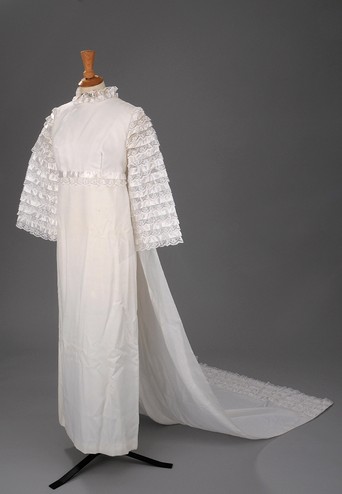
Artist/Maker: Emenson, ca. 1970
We hope that “Kate the Great” soars in her new role as princess, and she literally can, with
these wing-like sleeves and a 188 cm long cape, eh train, 188 cm long train.
Back-up celebrity: If Kate vetos, we recommend this one for Natalie
Portman (she was after all, a much better white swan).
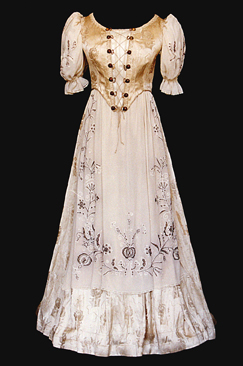
Artist/Maker: Created for the Corvin Department Store in 1943 (Hungary)
We think the white georgette embroidered apron is a nice way for Kate to let the
people of England know she will never forget her “humble” roots.
Back-up celebrity: Jessica Simpson (we hear she’s on the lookout for a
low-cut dress, which for the 40s this was).
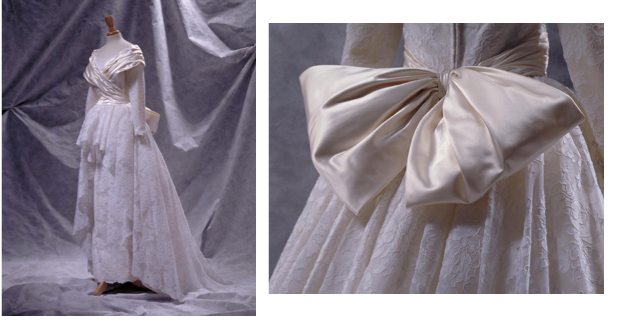
Artist/Maker: Victor Edelstein, 1987 (Great Britain)
Newsweek recently stated: “In a world gone to hell – thank God, a wedding.”
We couldn’t agree more. This a gift to the world, so lets put a bow on it (see: enormous bow above).
Back-up celebrity: Amy Adams (lest we forget her princess flair).
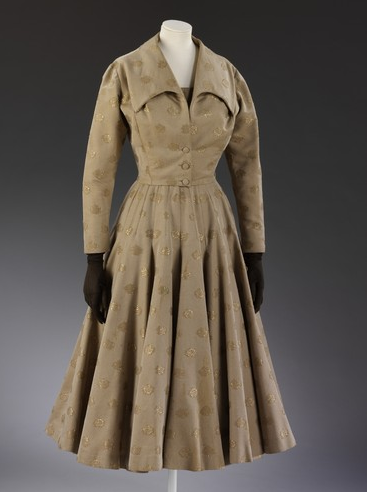
0 Comments on 5 dresses for Kate as of 1/1/1900











 David Ritz
David Ritz






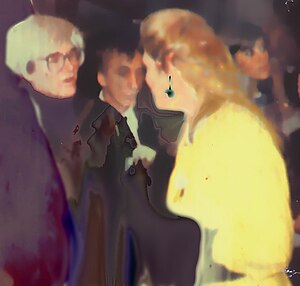
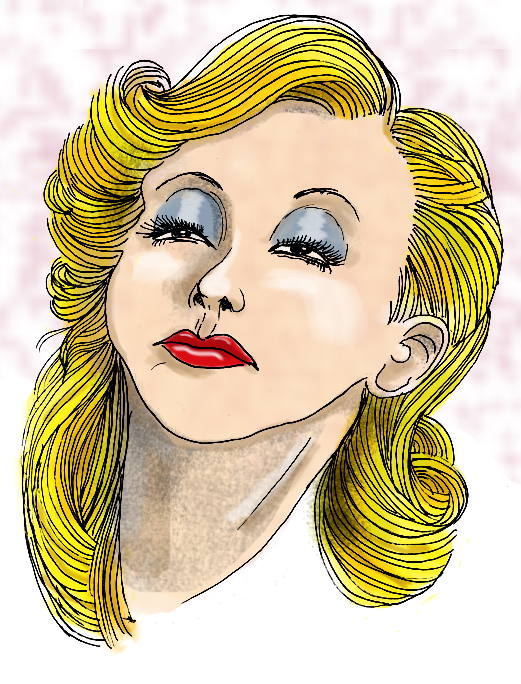



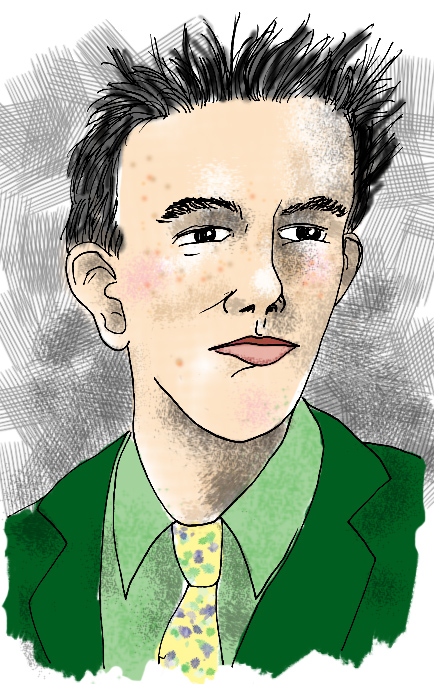
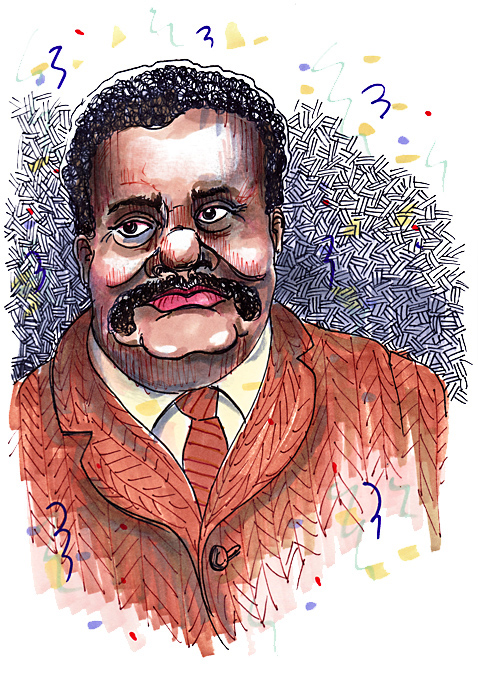
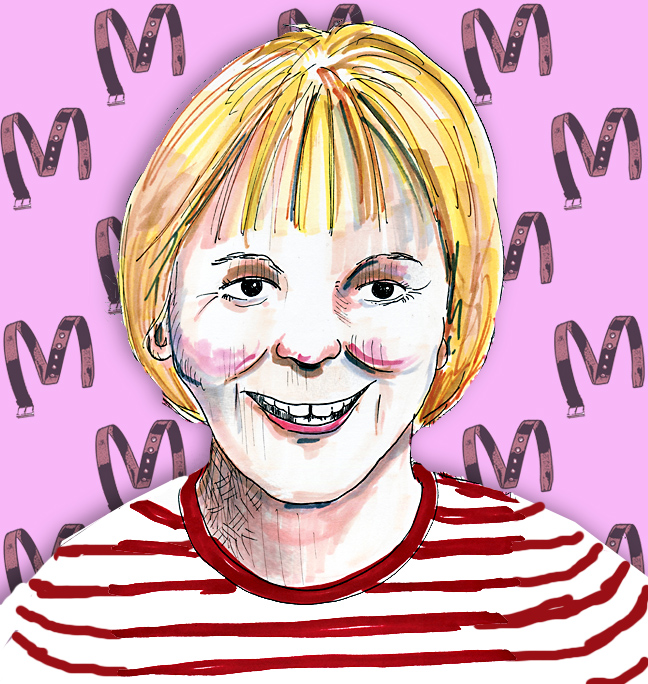


so cool!